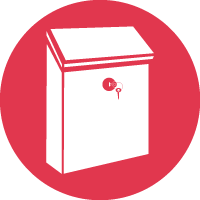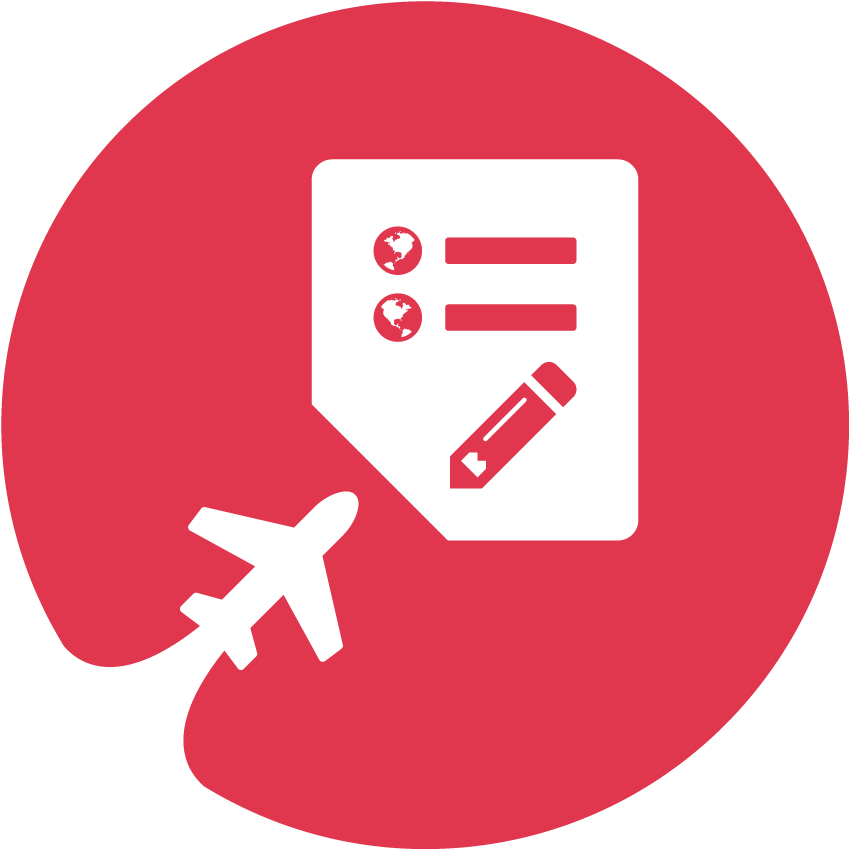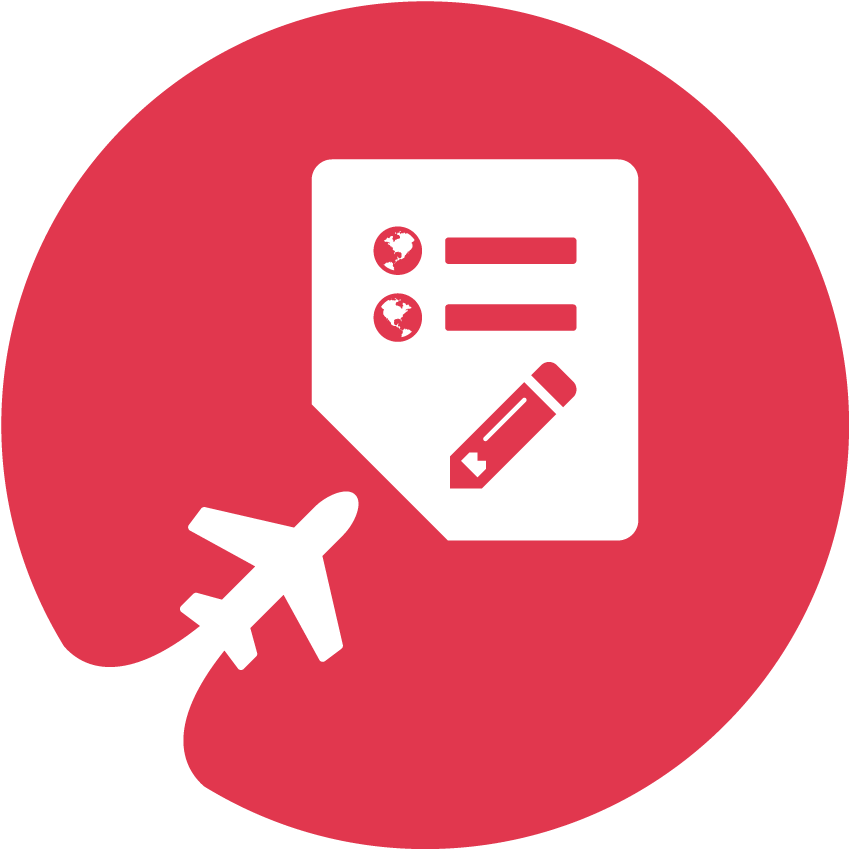-
History - Enter the Shoguns You can't Edit
Users Assigned: Shimizu77Japan’s austere, ruthless, but statesmanlike new ruler, Yoritomo Minamoto set up his government in Kamakura well away from the “softening” influence of court life that had been the undoing of his predecessor, Kiyomori, First of the national rulers to take the title of sei=I tai-shogun (“barbarian-sub-during great general”), Minamoto expanded and consolidated his power by confiscating lands form some of the defeated Taira and redistributing them to his samurai vassals.
Minamoto died in 1199, and the feudal structure passed intact to the tutelage of his widow’s family, the Hojo, who were content to paly regent to a figurehead shogun, in much the same way as the Fujiwara had done with the emperor. The fiction of Japanese imperial power had become infinitely extendable, the emperor at Kyto- still seconded by a Fujiwara regent at court—legitimized a minamoto who was himself a military dictator controlled by a Hojo regent. In a country where form and substance were inextricably interrelated, two things counted in politics: symbolic authority and real power. Neither could exist without the other.
A thwarted Mongol invasion in 1274 weakened the Kamakura regime. The fighting brought none of the usual spoils of war that provincial warlords and samurai had come to expect as payment. And the treasury was empty after earthquake, famine and plague had crippled the economy. Buddhist monasteries were using their private armies to support imperial ambitions to bring power back to Kyoto. Worst of all the Kamakura warriors resenting the way the Kyoto court referred to them as “Eastern barbarians,” sought refinement in a ruinous taste for luxury: extravagant feasts, rice costumes, and opulent homes. Kamakura was falling apart.
-
Overview You can't Edit
Users Assigned: Shimizu77Kamakura, less than an hour south of Tokyo by train, was the seat of Japan’s first military government.
The Kamakura shogunate was founded late in the 12th century after a long and bloody rivalry between two noble factions over control of the imperial court.
The victorious Minamoto clan chose Kamakura as its headquarters because this fishing village girded on there sides by steep wooded hills was natural fortress. Here they created what most of us envision as the “Way of the Samurai”; the values codes religion, and culture of a warrior caste that would rule Japan for 700 years.
Much of the culture was inspired by the Rinzai sect of Zen Buddhism and its sense of discipline and self-control, its austere philosophy of art and life.
The shogunate founded great numbers of Zen temples in Kamakura. Many are still standing, and some are registered as National Treasures.
From the Japan Railway’s station at Kita (North) Kamakura, about an hour from Tokyo on the Yokosuka Line, you can easily reach six temples in the nearby vicinity of here. -
What can you see and do? You can't Edit
Users Assigned: Shimizu77Don’t miss Tsuru-ga-oka Hachimangu, the Shrine complex built by Yoritomo no Minamoto, the first Kamakura shogun. Its was dedicated to the legendary Emperor Ojin, from whom Yoritomo claimed descent.
As part of the mid-September festival at this shrine, there is a spectacular tournament of archery on horseback (yabusame), in which contestants dressed in the costume of Kamakura-period huntsmen must hit a series of there small wooden targets as they come down a narrow course at full gallop.
The spacing between the targets gives the rider just barely enough time to drop the reins, notch and fire an arrow, and regain, control of his mount.
On the grounds of the shrine are two museums. The Kamakura Municipal Museum of Modern Art houses a collection of Japanese oil painting, watercolors, wood block prints and sculpture. The Kokukokan (National Treasure Museum) has fine collection of objects form various Kamakura temples and shrines, including some excellent 13th -century painting.
A ten-minute walk east of the Hachimangu, cross a shallow stream on the right for Takedera, better known as the “Bamboo Temple.” Located in the midst of a small but dense bamboo grove, the temple has a delightful pavilion where visitors can enjoy a bowl of thick green matcha, the green brew served in the tea ceremony.
Also east of the Hachimangu is the tomb of Yoritomo – an exceedingly plain and modest affair compared with the way a later dynasty of shoguns chose to immortalize themselves at Nikko. In many ways Yoritomo was a less then admirable figure in Japanese history, but you still might want to stop at this little moss-covered stone pagoda to pay your respects.
If for nothing else, Yoritomo earns our admiration for his determination to create a “Seated Buddha” for his capital to rival the huge bronze figure made in 749 for Todaiji temple in Nara. That idea bore fruit in 1292 with the casting of the 120-ton Daibutsu in the courtyard of Kotoku-in temple -after Mr. Fuji, probably the most photographed icon of Japan.
The massive seated figure, 11.4 m (37 ft) high sites in the classical pose of the Amida Buddha (“Compassionate one”), his hands resting in his lap, the thumbs touching the palms and the eyes half-closed in an expression of profound serenity.
The statue is hollow, and you can climb a staircase inside to look out through a window between the Buddha’s shoulders. A temple was originally built to house the figure, but this structure was destroyed in a tidal wave in 1495. For the five centuries since then, the Buddha has been dispensing his benevolence to visitors in the open air.
The Daibutsu and Kotoku-in temple are in Hase, the district in the western part of Kamakura. The other major attraction here is Hasedera. In the Kannon Hall of this temple is the largest wooden devotional figure in the country; a statue of the “Eleven-Faced Goddess of Mercy”, some 10 m (33 ft) high, carved from a single tree trunk and covered in gold leaf.
The 10 smaller heads in her crown symbolize her ability to search in all directions for those in need of compassion. No one knows for certain when the figure as carved; one legend dates it to the early 8th century.
The Amida Hall of Hasedera houses the image of a seated Amida Buddha, endowed by Minamoto no Yoritomo when he was 42 a particularly unlucky age according to popular Japanese belief.
Yoritomo’s piety bought him a little more time to enjoy his success; he was 52 when he was thrown by a horse and died of his injures. -
Where to go next? You can't Edit
Users Assigned: Shimizu77Kamakura history was not shaped by the Minamoto clan alone. No account of this area would be complete without the story of Nichiren (1222-1282), the monk who founded the only native Japanese sect of Buddhism, Nichiren’s defiance of both Zen and Jodo (“Pure Land”) Buddhism eventually persuaded the shogunate to order him beheaded on a hill to the south of Hase.
However, legend says that, just as the executioner raised his sword, a lighting bolt struck and broke it in two. Before he could try again, a messenger arrived with an order commuting Nichiren’s sentence to exile ton the island of Sadogashima.
Later, in 1337, the Nichiren sect built the Ryukoji temple on the same hill. On the nearby Sagami Bayshore are yoigahama and Shichirgahama. Two of the beaches closest to the metropolitan area.
In the hot humid summer months in can feel as if the entire population of Tokyo and Yokohama is here, searching in vain for a vacant patch of sand.
Equally popular is Enoshima, the little island just offshore, with a hill in the middle the affords on clear days a fine view of Mt. Fuji and the Izu Peninsula.
SECTION TITLE
| Rev. | User | Date |
|---|
Alternative Routes - Flights, Trains, Buses to Kamakura
Use the all modes of transport search engine to get you there.
Want a widget like this on your own website to help people get to you?
Accommodation near Kamakura
We currently don't have any accommodation in the local area tagged by our community. Please see the list of hotels below, or if you want to help out and earn Reputation Score then search for your favourite places to stay with the 'destinations' search on the top of every page, and then contribute details about that place e.g. room details, location facilities, and why you like it.
Hotels near Kamakura
Landmarks near Kamakura
Looking for something to do or a place to go see near Kamakura? Here is our list of options.
-
Yokosuka Arts Theatre11.38 Km from KamakuraYokosuka Arts Theatre (横須賀芸術劇場, Yokosuka Geijutsu Gekijō) is part of the mixed-use Bay Square complex in Yokosuka, Kanagawa Prefecture, Japan. It opened in 1994. The horseshoe-shaped theatre seats 1,806 and there is a smaller hall, the Yokosuka Bayside Pocket, with a capacity of 600. The Bay Square complex is by Kenzo Tange, with acoustical design of the halls by Nagata Acoustics.
-
Yokohama Curry Museum16.05 Km from KamakuraThe Yokohama Curry Museum (横濱カレーミュージアム, Yokohama Karē Myūjiamu) was a restaurant and historic museum of curry in the Isezakichō district of the port city of Yokohama, Japan, between 2001 and 2007. Different types of curry were available from a selection or restaurants, ranging from a full meal to a quick taste option. The museum included a recreation of Yokohama's port in the late 19th century. Exhibits lined the walls and part of the central area built in the form of a ship at port. On the eigh...
-
Christ Church, Yokohama16.18 Km from KamakuraChrist Church, Yokohama (横浜山手聖公会 Yokohama Yamate Seikokai) is a historic Anglican church located in Yamate, Yokohama, Japan. Providing a center of worship for both Japanese and English language based congregations the church traces its foundation to 1863, shortly after the formal opening of the treaty port of Yokohama. The church building has been rebuilt and refurbished on several occasions as a result of fires, earthquakes and the incendiary bombing experienced during the later stages of the S...
-
Yokohama Stadium16.20 Km from KamakuraFor the football (soccer) stadium, see International Stadium Yokohama Yokohama Stadium (横浜スタジアム, Yokohama Sutajiamu) is a stadium in Naka Ward, Yokohama, Japan. It opened in 1978 and holds 30,000 people. It is primarily used for baseball and is the home field of the Yokohama DeNA BayStars. The stadium is unique, because it features dirt around the bases and pitcher's mound, but with dirt colored turf infield and base paths. The entire green portion of the field is now turf. The stadium is one o...
-
Muza Kawasaki Symphony Hall27.11 Km from KamakuraMuza Kawasaki Symphony Hall (ミューザ川崎シンフォニーホール, Myūza Kawasaki Shinfonī Hōru) is a concert hall in Saiwai-ku, Kawasaki, Kanagawa, Japan. The name is coined from music and za (座) lit. 'seat'. The vineyard-style concert hall, with a capacity of 1,997, was built for the eightieth anniversary of the foundation of the city. The hall opened in July, 2004 with a performance of Mahler's Symphony No. 8 by the Tokyo Symphony Orchestra. In that year the orchestra, previously without a permanent home, took up...
-
Lazona Kawasaki Plaza27.38 Km from KamakuraLazona Kawasaki Plaza (ラゾーナ川崎プラザ, Razōna Kawasaki puraza) is a shopping mall in Saiwai-ku, Kawasaki, Japan. The mall adjoins the west side Kawasaki Station.
-
Kawasaki Stadium27.43 Km from KamakuraKawasaki Stadium (川崎球場, Kawasaki Kyūjō) was a stadium in Kawasaki, Kanagawa, Japan. The stadium was opened in 1952 and had a capacity of 30,000 people. It was primarily used for baseball and was home of the Taiyo Whales until they moved to Yokohama in 1977 and became the Yokohama Taiyo Whales. It was also home to the Takahashi Unions from 1954 to 1956, before they became the Daiei Unions, and the Lotte Orions before they moved to Chiba in 1992 and became the Chiba Lotte Marines.
-
Kawasaki Velodrome27.60 Km from KamakuraTrue
-
Nihon-ji31.62 Km from KamakuraTrue
-
Nihon Minka-en32.35 Km from KamakuraTrue
Points of Interest near Kamakura
Looking for important things or something to do or a place to go see near Kamakura? Here is our list of options.
Filter By Tags:
-
TokeijiKnown as the “Divorce Temple,” which was unique as a sanctuary for the women of the warrior caste seeking an escape from unhappy marriages. If the victim managed to make her way here and stay for three years as a nun, she could obtain a decree of divorce from the shogunate and go free.
The homotsukan (treasure house) of Tokeiji has a collection of Kamakura-period paintings, sculpture, and calligraphy, some of which are registered as Important Cultural Objects. Also on the ground is the Matsugaoka Bunko, a research library established in memory of D.T. Suzuki (1870-1966), who pioneered the study of Zen Buddhism in the West.Tokeiji 1367 Yamanouchi, Kamakura-shi, Kanagawa-ken 247-0062, Japan -
EngakujiEngakuji, founded in 1282, became the second most important in the group of monasteries called the Gozan (“Five Mountains”) a hierarchy established in the 14teh century for the Zen temples under the official patronage of the shogunate.
Engakuji is Kamakura’s largest temple complex; often wracked by fire and earthquake, 17 of the original 46 building have survived.
Two of these are registered as National Treasures: the shariden (hall of holy relics) built in 1282 and the huge belfry on the hill above.
The bell 2.5 m (8-ft) tall, was cast in 1301. The belfry on the hill above. The principle building open to the public at Engakuji is the butsunishi-an ceremonial hall, where visitors can take part in a tea ceremony.Engakuji 409 Yamanouchi, Kamakura, Kanagawa Prefecture 247-0247, Japan -
Yokohama
Situated 20 km (12.5 miles southwest of Tokyo, Yokohama was an unimportant little fishing village until 1854, when Japan’s long centuries of self-imposed isolation came to an end.
Foreign diplomat’s traders, and missionaries where at last able to enter the country. But the unrest they inspired prompted the Tokugawa government to move theme all here to guarded compound on the village flats ostensibly to guarantee their safety, but more importantly to contain the contamination of their uncouth way’s and ideas.
The ploy worked well enough until the Meiji Restoration, when those Western ideas where needed to modernize the country. In 1869 Yokohama became an international port, and the burgeoning international community quickly spread beyond its confinement to the high ground still known today as the Bluff. In 1872 Japan’s first railway went into service between Yokohama and Tokyo, and the city began to flourish.
The two cities have twice shared the same destructive fate. The great Kanto earthquake of 1923 destroyed some 60000 homes in Yokohama and took over 20000 lives. The next twenty years of reconstruction and growth were wiped out overnight, in may 1945, when American bomber leveled nearly half the city. the harbor was hastily restored during the Korean War and today is one of the busiest and most important trading ports in the world.
With a population of some three million, Yokohama no longer sits in Tokyo‘s shadow. In many respects, in fact, it is the more cosmopolitan city preferred by many residents of the greater metropolitan area as a place to live the work. If you are on a short visit to Japan, your excursion time might be better spent elsewhere. But Yokohama’s great waterfront, port redevelopment project, museums, and restaurants should still keep it high on your list.Yokohama, Kanagawa Prefecture, Japan -
Nippon Maru Memorial ParkLocated on the "Bund" waterfront in Yokohama is the Nippon-Maru Memorial Park, where pride of place goes to the three-masted sailing ship popularly called the “Swan of the Pacific.”
Now a training vessel, it is open to visitors on guided tours.Nippon Maru Memorial Park 2 Chome-2-1-1 Minatomirai, Nishi-ku, Yokohama-shi, Kanagawa-ken 220-0012, Japan -
Yokohama Museum of Art Grand GalleryDesigned by Tange Kenzo and housing works by both Western and Japanese artists, including Picasso, Braque, Kandinsky, Kishida Ryusei, and Yokoyama Taikan.Yokohama Museum of Art Grand Gallery 3 Chome-4-1 Minatomirai, Nishi-ku, Yokohama-shi, Kanagawa-ken 220-0012, Japan
-
JapanNo info yet.. Please go to this page and enter some.Japan, 〒220-0005 Kanagawa Prefecture, Yokohama, 西区南幸 2-1-22 相鉄ムービル 3F
-
JapanNo info yet.. Please go to this page and enter some.Japan, 〒212-0011 Kanagawa Prefecture, Kawasaki, Saiwai Ward, Saiwaicho, 2 Chome−679 河辺ビル 2F
-
Sengaku-ji
Located in Shinagawa which is, otherwise not very rich in tourist attractions; this is one gem that should not be missed.
Sengakuki is a temple that evokes one of the most popular stories in all of premodern Japanese history.Thousands of visitors come annually to Sengakuji to lay incense on the tombstones and walk through the small museum called Hall of the Loyal Retainers, where weapons, personal effects, and other memorabilia are preserved.
Sengaku-ji 2 Chome-11-1 Takanawa, Minato-ku, Tōkyō-to 108-0074, Japan -
Shibuya StationAn estimated three million people pass through Shibuya station every day.Shibuya Station 2 Chome Dogenzaka, Shibuya, Tokyo 150-0002, Japan
-
ShibuyaWhen you hear the name "Shibuya", those in the know immediately think of the fashion mecca of youth in Tokyo. This area in the vicinity of Shibuya's main train station is an incredible array of people, lights, colors, entertainment, shopping, food, traffic, bars, concerts, and ..whatever else you can think of! Shibuya is also one of the 23 "wards" of central Tokyo so there is more than the famous station district but for the visitor with excitement in their eyes, the area a couple of kilometers or so around the station is a paradise!
Many world wide trends in Asian fashion and culture start right here! Besides neon and big city lights, a visitor will see every kind of youth and all kinds of fashion. Business men and women abound as well as hundreds of thousands of people from everywhere. Shibuya ward is large and includes many other famous districts such as Harajuku, Ebisu, Daikanyama, Sendagaya, Hiroo, Omotesando, and Yoyogi. These are places with their own local culture within Shibuya ward and can be researched separately. There are neighborhoods, universities, corporations and cultural places. It is a city to itself!
The famous district includes Center Gai pedestrian zone, and area that has to be walked on a busy weekend evening. The Hachiko statue: the most famous meeting place in Japan. Start here for your Shibuya district tours! Love Hotel Hill, containing....you guessed it! And also Dogen-Zaka, a street full of more of....everything. Shibuya is an ultimate Ward and an ultimate district. There are enough places of interest in Shibuya Ward to keep busy with it's many districts but the train station (huge, one of the busiest on earth) area is the city on fire! SHIBUYA IS NOT TO BE MISSED!Shibuya, Tokyo, Japan
Exchange Rate History Japan
Exchange rate fluctuations can have a considerable impact on your trip budget. If your home currency has appreciated in value in the recent term over the currency of your destination you are likely to find the place inexpensive.
Select your home currency from the drop down to compare it to the currency in use in Japan.
Currencies fluctuate all the time, to keep updated of rapidly devaluing currencies follow us on Twitter or Facebook , or if you have somewhere special in mind sign up for an account and plan a trip. We will then keep an eye on their currency rates, and send you an alert if their currency goes down in comparison to yours.
Climate near Kamakura
Do you know of anything else about the enviroment that makes you happy to come to Kamakura? If it's a city or neighbourhood are there any climatic, or microclimatic features that you could tell others about. If the location is a building or place, then can you describe it maybe as "sun-lit", or "cold in the mornings". We'd love you to contribute - why not let us know in the drop box below
Graphic showing average weather in Kamakura in Celcius and Centimeters (Change to Farenheit and Inches)
| Month | Temp °C | Rainfall Cm | Temp °F | Rainfall Inches |
|---|---|---|---|---|
| Jan | 4.6 | 63.9 | 40.3 | 25.2 |
| Feb | 4.8 | 100.7 | 40.6 | 39.6 |
| Mar | 8.1 | 131.6 | 46.6 | 51.8 |
| Apr | 13.5 | 160 | 56.3 | 63 |
| May | 17.7 | 143.8 | 63.9 | 56.6 |
| Jun | 21.4 | 190.2 | 70.5 | 74.9 |
| Jul | 25.6 | 140.7 | 78.1 | 55.4 |
| Aug | 26.7 | 196 | 80.1 | 77.2 |
| Sep | 23.3 | 271.3 | 73.9 | 106.8 |
| Oct | 17.4 | 238.9 | 63.3 | 94.1 |
| Nov | 12.3 | 120.2 | 54.1 | 47.3 |
| Dec | 7.4 | 94.3 | 45.3 | 37.1 |
Travel Info
Latest news from Kamakura
Events near by Kamakura
Do you have an event that you want to shout about? Email contact@redplanet.travel and we'll tell you how to get into this list for free!
Latest News from Kamakura
Let us know what is happening by tweeting @redplanetters - Use this link which will make sure you #hashtag where you are!
 Reviews
Reviews
We don't have any reviews of Kamakura at this time. If you've been recently please make a submission using the drop box at the bottom of the page, or better yet, join our community, participate and then write some reviews according to your Capacities and Reputation Score.
- We don't have any reviews.. please tell us.
 Page drop box for Kamakura
Page drop box for Kamakura
Been to Kamakura recently, or maybe you know something about the history of this place? We want you to tell the Red Planetter community about this place.
You don't need an account or have to sign up or anything!
You can earn Reputation score by joining our community and also enrol on the TravelTip$ program and get paid for good advice by other travellers.
Please just use the drop box for "facts" only. If you want to give your opinion (qualified by your Capacities) then please write a review (once you have enough Reputation score).
Find E-Mail easier? Send your comments about the place, or advise us if you see something that needs correcting on this page. You can attach pictures to your e-mail too (but try to keep the image size down, and no more than 16mb total).
If you are not logged in, or choose to make the drop box anonymously you can tell the community honestly what you seen without any concern. Please send images or other evidence to support your claims.
Summary
Topic Tags for Kamakura
Topic Tags are what bind the Red Planet Travel site together, and are very important.
This place has been tagged:
If you think those tags are not perfect, then please let the person responsible for this page know by dropping a note in the anonymous drop box below, or better yet sign up or login and join our community, once you've got enough reputation score you can edit them yourself!
Got a Question?
Ask any travel related question or help others with your experience
Page Captain & Crew
Before you apply read about the Roles on Red Planet Travel
Have something to Contribute?
We are looking to grow the information on this site, if you have something to contribute to any page then we'd like to hear from you.
 What's more you can now earn money (paid direct via Paypal) for writing descriptions about places you know.
What's more you can now earn money (paid direct via Paypal) for writing descriptions about places you know.
You will need to tell other members about yourself and your relevant knowledge and experience about what you want to contribute about.
Look below for some example page types, and types of people whose views on a place might be useful to know.
Page Type: Hotel
Tell us your job, knowledge, experience..
My Experience: Doctor
If you are the owner/manager of any place, then you can, of course, take control of your page and add relevant information other visitors might want to know
User Videos
Webmasters & YouTubers - to add a video to this section just link to this page in the YouTube description on your video
User Images
Do you have any recent pictures? Please use the drop box at the bottom of the page to send them to us.
Related Questions
Can you help with answering any of these questions? Help other travellers with your experience and earn reputation score on this site.
Travel Alerts
Important information posted by Red Planetters that might be useful to know.
 MDtravelhealth
MDtravelhealth TravelWiki
TravelWiki Perfect Place
Perfect Place

 More hotels from our Partner
More hotels from our Partner 